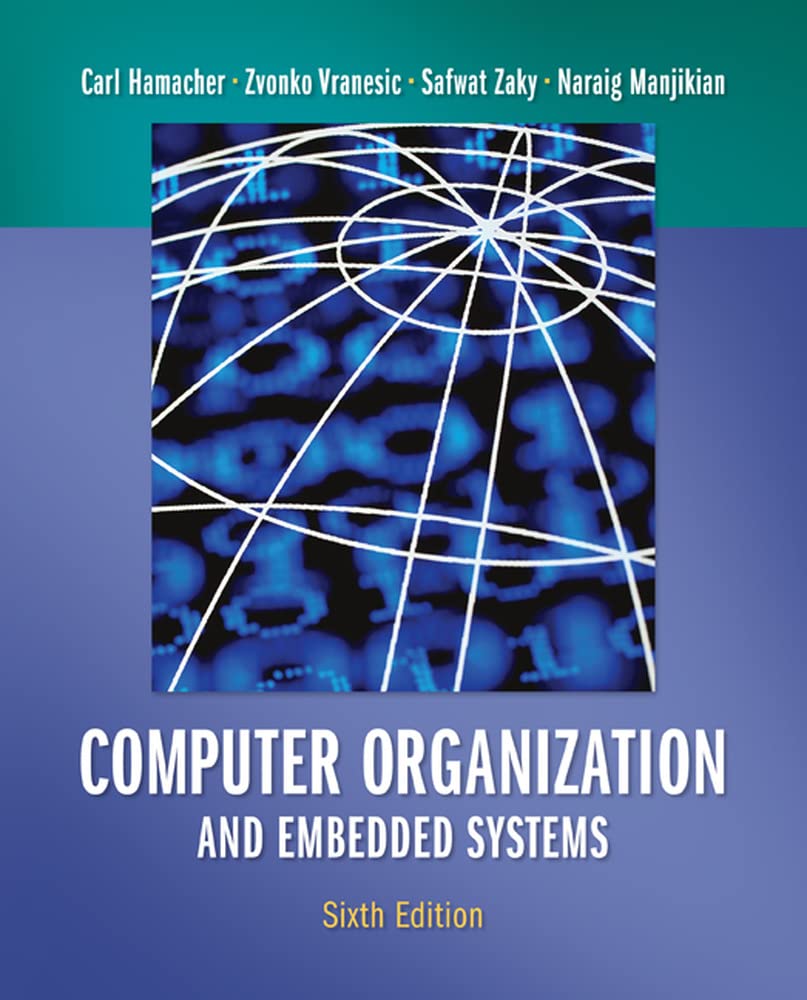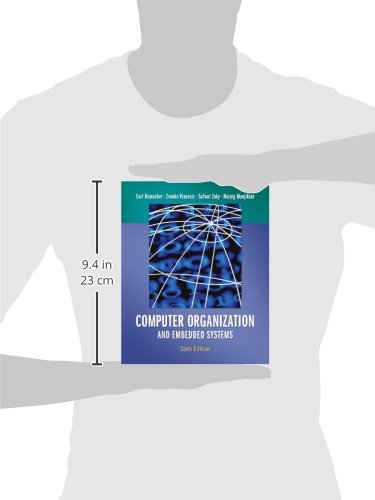Customer Services
Copyright © 2025 Desertcart Holdings Limited
Desert Online General Trading LLC
Dubai, United Arab Emirates



Computer Organization and Embedded Systems
E**I
Essential information for Comp Sci students!!
This book was required for one of my classes, but outside of the requirements, I continue to reference the material long after the class concluded. It is great for explaining computer architecture, and I find how it is organized and written to be easy to understand and engaging. Even if this book isn’t required, still consider looking into getting it and using the material for future reference.
S**G
Five Stars
Its just a text book that is required by college class, Exactly the same as hard cover version
M**L
Better condition than described
With expedited international shipping to Canada, it was expected to arrive in 3-6 business days, and ended up arriving in 4.The book was in even better condition than described on website. The condition is nearly new, the only thing is coffee stain around outside edge of pages, but none inside. Although, the outside cover had a little coffee or something on it, which I would expect to have been wiped off prior to sending to customer.Overall satisfied, but very disappointed with Amazon's incredibly high priced, flat fee for expedited international shipping. The shipping cost more than the textbook, and surprisingly for this incredibly high priced expedited shipping, local postal service was used rather than UPS or FedEx or the such, without any tracking.
K**W
Same book, lower cost!
This book was half the price of the normal edition and exacly the same as other students in my class!
S**N
Great book. Outlines feedback topology of division and multiplication ...
Great book. Outlines feedback topology of division and multiplication circuits.
K**8
Five Stars
Absolutely fascinating book. Explains how you can move from a single transistor up to a real computer.
M**N
This is a very good textbook. It is very complete and detailed
I have been teaching a course on computer organisation and architecture for the past 8 years. I have used different textbooks during this period. This is the best one. It is very complete and detailed. It is way better than most of the computer organisation/architecture textbooks in the market. In particular, it is better than Stallings' and Tanenbaum's books.It starts with architecture where it devotes 3 chapters about this topic. The chapters are great although I still prefer if they have used a specific assembly language (like MIPS) instead of something virtual.The next 4 chapters cover processor, I/O and memory. The explanation for the processor is great. The memory is also great but I did not like the I/O chapter. I feel it was not well written specially when it covers the I/O standards where the explanation is confusing.In a nutshell, I strongly recommend this textbook. However, in many cases you need to be patient and read the paragraphs few times to digest the material.===EDITAfter carefully reading Tanenbaum's textbook, I have to revise the above review. I think Tanenbaum's textbook is also great. But I have to say that you need to read Chap. 4 (The Microarchitecture Level) several times to digest it. But if you understood it then you would fully understand how processors work. I have switched to Tanenbaum's textbook.
V**N
Boring, but it gets the job done
I know I purchased this book to learn, but does it have to be so dry and humorless? I end up just browsing around on the interwebs when I have trouble in this class instead of reading this book. That being said, I does contain a lot of good information, despite being rather outdated.
Trustpilot
1 month ago
3 weeks ago
1 week ago
2 months ago